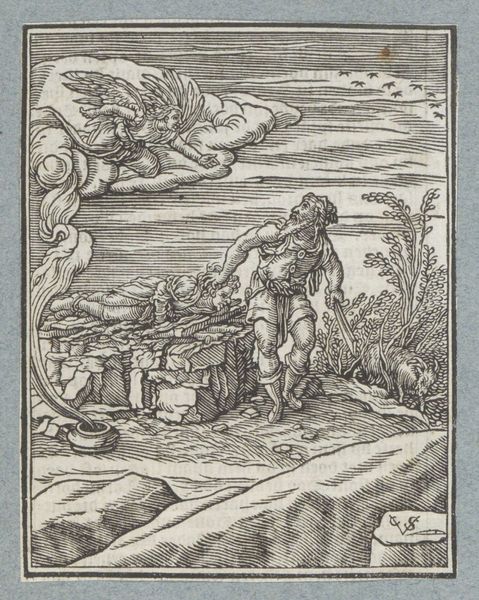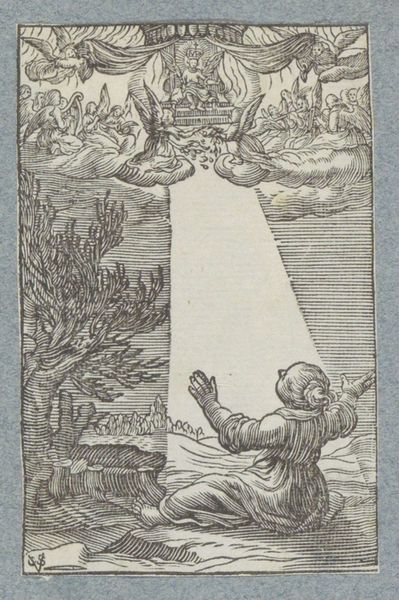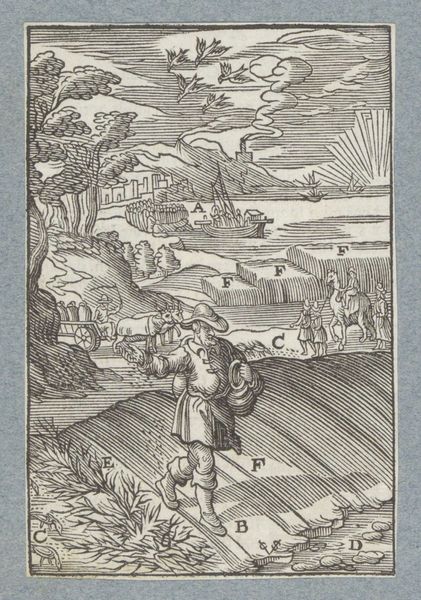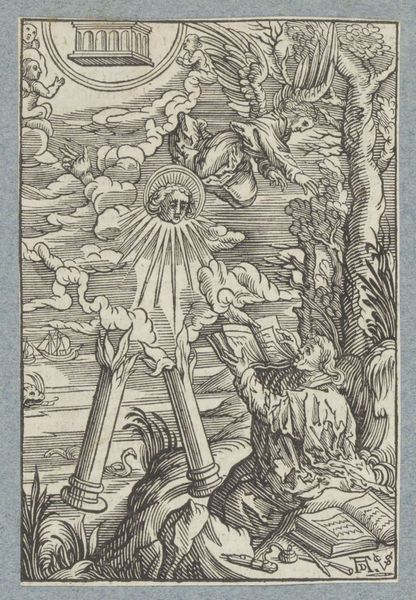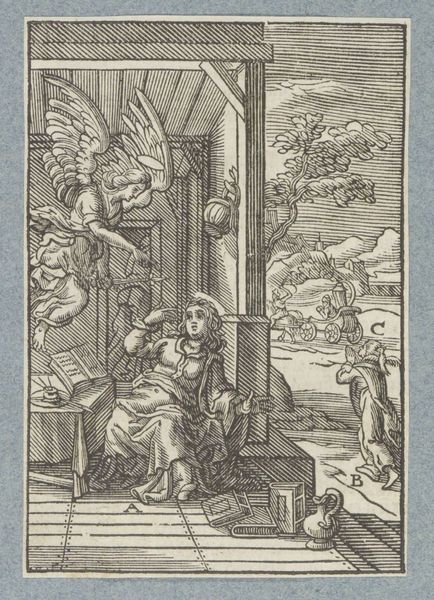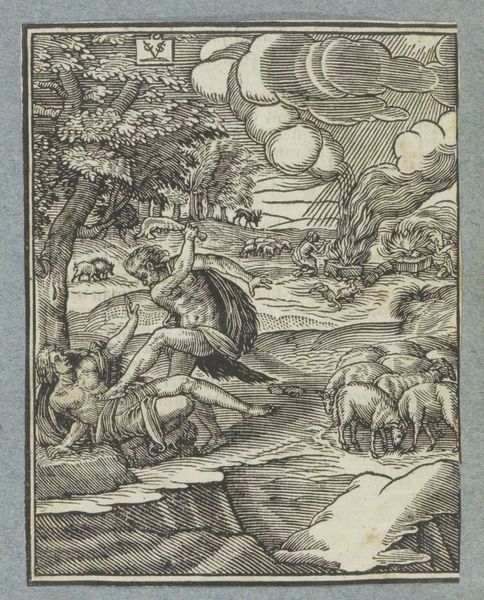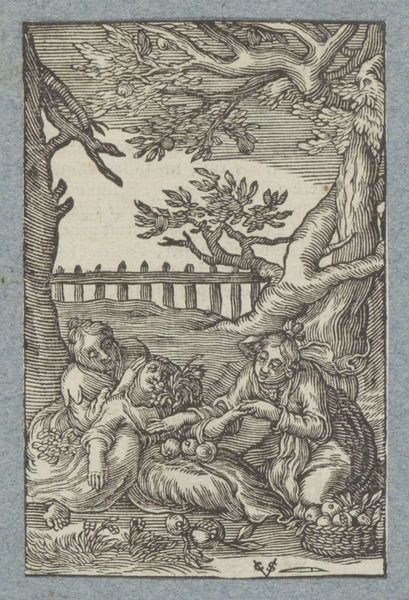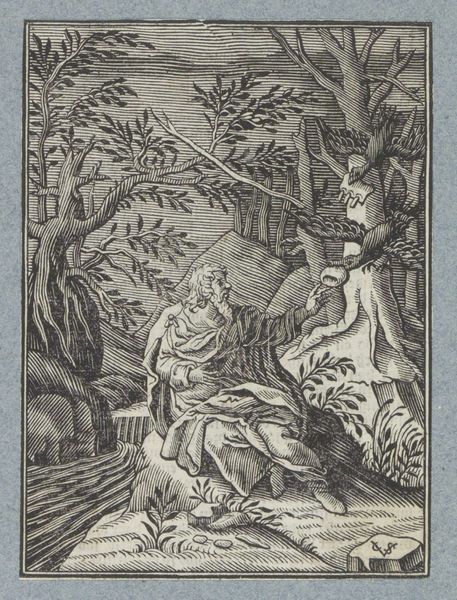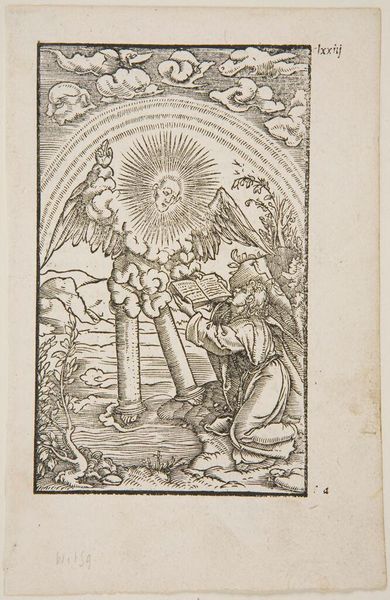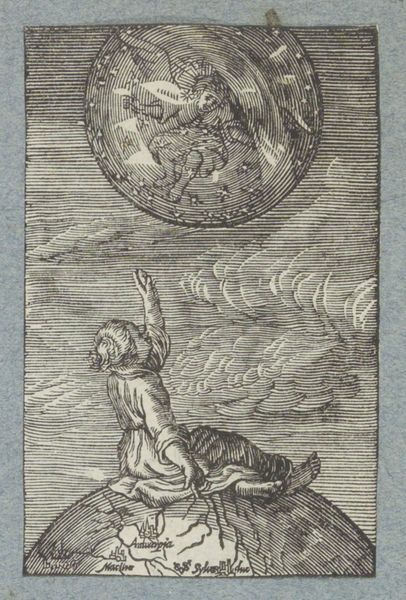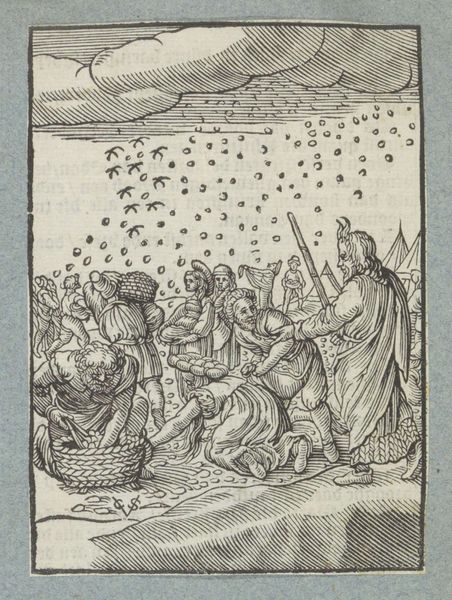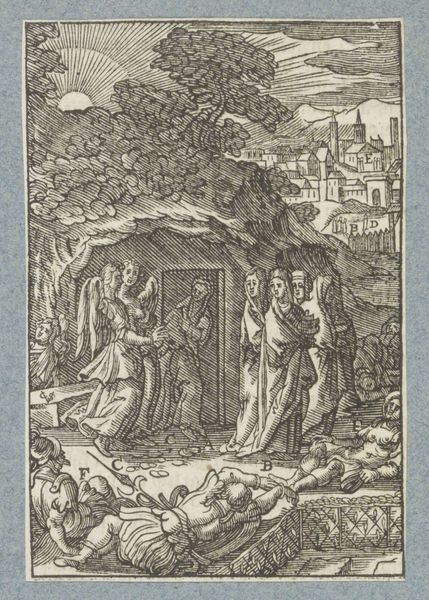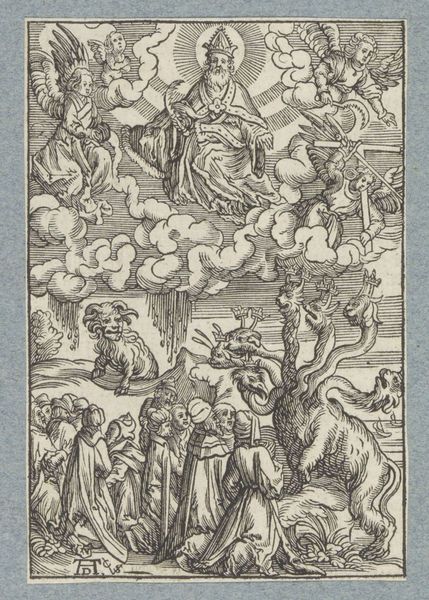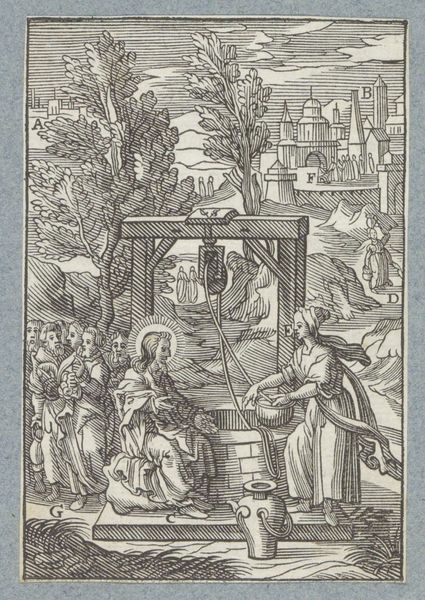
Gods verbond met Abraham; Jakob zalft de steen waarop hij geslapen heeft 1645 - 1646
0:00
0:00
drawing, ink, engraving
#
drawing
#
narrative-art
#
baroque
#
figuration
#
ink
#
history-painting
#
engraving
Dimensions: height 111 mm, width 77 mm
Copyright: Rijks Museum: Open Domain
Editor: Here we have a work by Christoffel van Sichem II from around 1645, titled "Gods verbond met Abraham; Jakob zalft de steen waarop hij geslapen heeft" – a drawing rendered in ink using engraving. It's striking how much detail is packed into such a small space. I'm curious, what catches your eye when you look at this? Curator: I’m immediately drawn to how this engraving reflects the prevailing social and religious narratives of the time. Consider the emphasis on covenants, divine promises – ideas deeply ingrained in 17th-century society. Who do you think the figures are meant to be? And what kind of statements do you think they were trying to communicate to the contemporary viewers of the work? Editor: Well, judging from the title, one figure must be Abraham entering a covenant with God, while the other seems to be Jacob anointing the stone. The act of anointing suggests a ritual of consecration, establishing the stone as a sacred site, doesn't it? It looks almost like propaganda! Curator: Precisely! Religious art served a critical function, especially amidst the Reformation and Counter-Reformation. Engravings like this would have been widely distributed, visually reinforcing religious teachings and moral values within the domestic sphere, in schools, and even political spaces. This makes you think, doesn't it, about how art was so intertwined with political and ideological currents of the era. The piece uses biblical narratives to subtly reinforce a certain worldview. Do you think a piece such as this could be interpreted differently if viewed by someone from a different faith background or historical period? Editor: That’s a great point! Someone from another background might see the anointing as simply anointing a rock! They may see other images like that of god above and criticize them, due to differing social expectations. Curator: Exactly, these details allow us a nuanced understanding of how cultural forces shape both the production and interpretation of art. The politics of imagery, if you will! Editor: I hadn't considered it that way. I now see how deeply rooted this artwork is in its socio-political environment. Curator: And that, in turn, allows us to appreciate the complexities of its meaning and impact on its original audience.
Comments
No comments
Be the first to comment and join the conversation on the ultimate creative platform.
